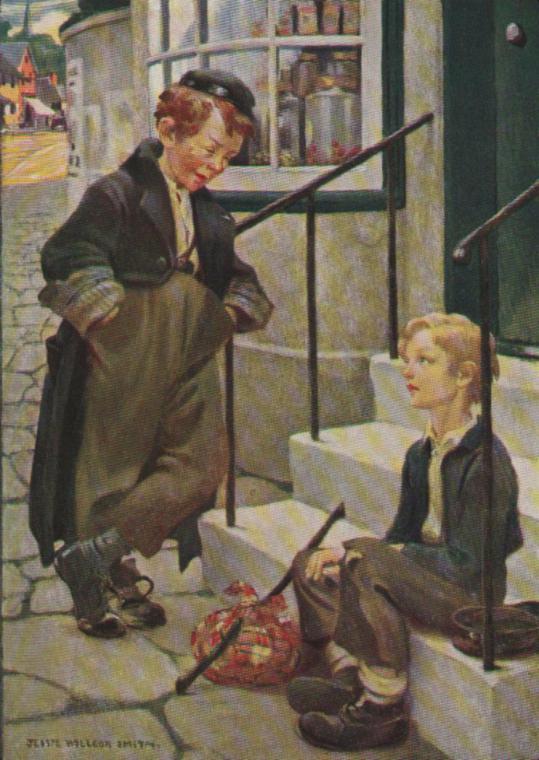While studying Oliver Twist by Charles Dickens, I focused on a key area of the novel where Oliver walks to London, and ‘encounters on the road a strange sort of young gentleman.’ Being the Artful Dodger and their first encounter.
Oliver Twist and the Artful Dodger are described to be of similar ages, however it’s clear that Charles Dickens has characterised the two, to have completely different mannerisms and behaviour. For example, the Artful Dodger appears to contrast Oliver’s innocent and child-like behaviour as ‘He was a snub-nosed, flat-browed, common-faced boy enough; and as dirty a juvenile as one would wish to see; but he had about him all the airs and manners of a man.’ and ‘he wore a man’s coat.’ (Dickens, 1992, 48) And also a hat. Portraying that his appearance, is one characteristic that makes him appear older than what he is. This also highlights his mannerisms to appear as a man, and indicates his loss of innocence that we would expect from 9-year old children, like Oliver, and indicates his relation to Fagin’s world of crime, where he uses it to lead Oliver to Fagin’s Den.
Charles Dickens’ use of specific lexis for the Artful Dodger for his introduction to Oliver Twist ‘Hullo, my covey! What’s the row?’ show an extreme use of “roystering and swaggering” (1992, 48) and 1830s slang. Showing off the Artful Dodger’s cunning character, compared to Oliver’s sweet and innocent response of ‘I am very hungry and tired,’ where it’s clear he is using proper English, maybe highlighting an education loss the Artful Dodger had that Oliver received. Oliver is so naive and distracted by the Artful Dodger, and his personality, that he doesn’t realise that he may be dangerous and dishonest with him, by direction of the mysterious youth; and Oliver, falling to, at his new friend’s bidding’ (1992, 49). He is unaware of Fagin’s criminal group and believes that he works in the mill.
The novel is said to be ‘a cultural myth,’ a ‘text that permeates the cultural consciousness.’ (Juliet John, 2010). Dickens contains elements of purity that is shown in Romantic literature. 1850 was they year the Romantic era ended, a similar time to when Oliver Twist was published in 1838. As Victorians would have read literature that contained attitudes from the Christian theology, when reading Oliver Twist, they may have been shocked at the display of the Artful Dodger. With his loss of childhood and innocence. Also, they may feel saddened by Oliver being surrounded by such an evil environment, highlighting Dickens displaying a call-for-help to protect all children as ‘In 1833 the Government passed a Factory Act to improve conditions for children working in factories. Young children were working very long hours in workplaces where conditions were often terrible.’ (Open Government License, 2017). He wanted to end child labour and keep them off the streets for their safety.


Written by: Rebecca Ledward
Proofread by: Sophie Loxham
Bibliography
the Artful Dodger. 2017. the Artful Dodger. [ONLINE] Available at: http://www.oocities.org/the_pleasant_whistler/book.html.
Dickens, Charles. Oliver Twist. Hertfordshire: Wordsworth Editions, 1992.
The National Archives. 2017. 1833 Factory Act – The National Archives. [ONLINE] Available at: http://www.nationalarchives.gov.uk/education/resources/1833-factory-act/. Pinterest.
Pinterest. 2017. Best 25+ Artful dodger ideas on Pinterest | Oliver twist, Oliver twist film and Slab pottery. [ONLINE] Available at: https://www.pinterest.co.uk/explore/artful-dodger/.
Quizlet. 2017. Re104 Unit 2 Midterm Flashcards | Quizlet. [ONLINE] Available at: https://quizlet.com/196812002/re104-unit-2-midterm-flash-cards/.
Advertisements Share this:




